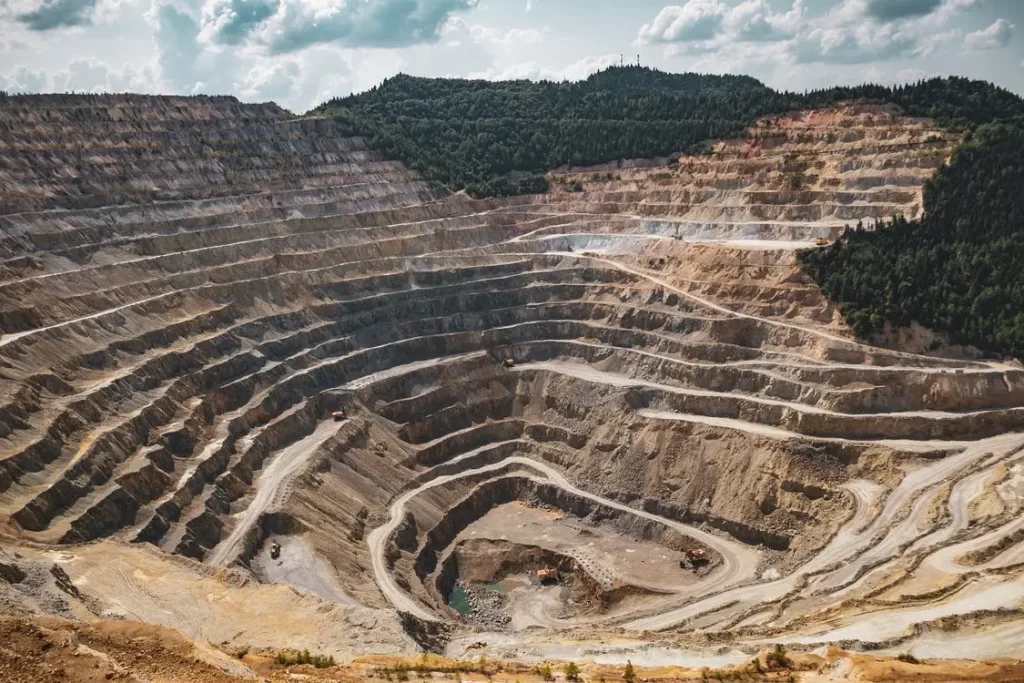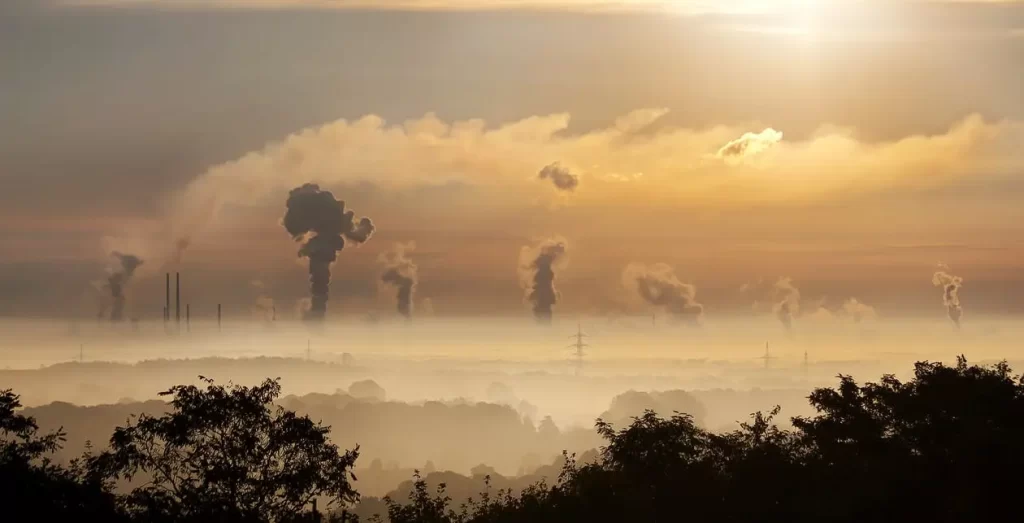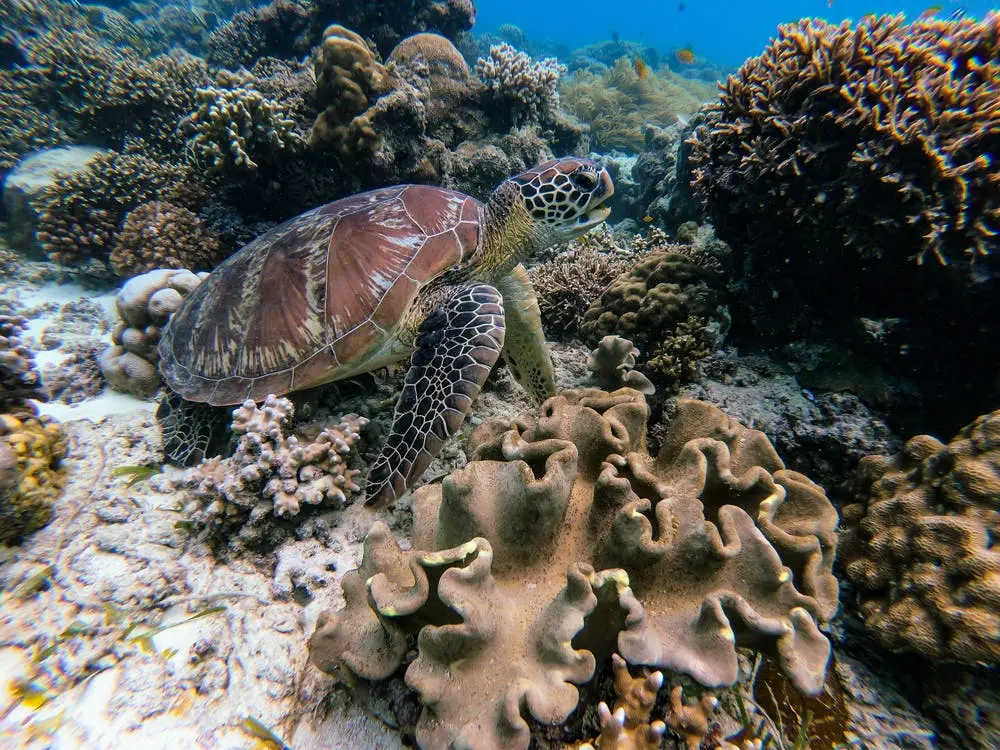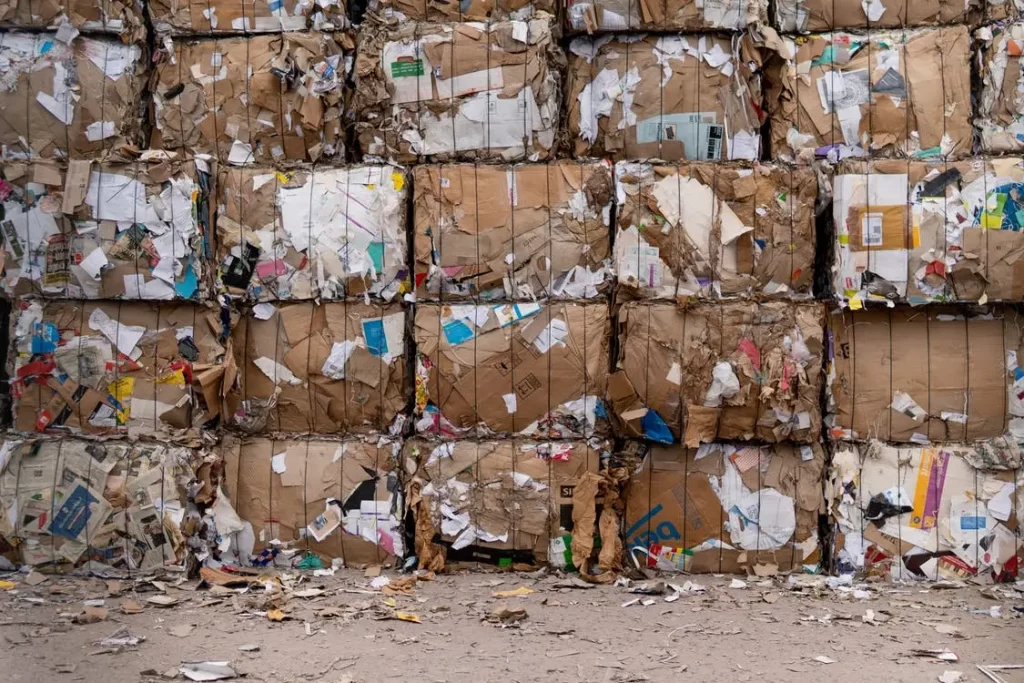Environmental degradation is all around us. It affects us, the native animal species, native plants, and the microbiome that thrives in the soil.
Let’s take a closer look at environmental degradation. We’ll define it, explore some examples, causes, and effects, then suggest some good solutions to this type of environmental disaster.
What is Environmental Degradation Definition?

Environmental degradation is the exploitation of natural resources and the destruction of the environment to get them.
We also have a related article where we list the many natural resources examples that are both renewable and non-renewable.
This includes soil disruption, waterway destruction, habitat disruption, natural resource depletion, and species endangerment and extinction.
Environmental Degradation Examples (5 Types)
There are 5 main types of environmental degradation.
- Soil/Land Degradation
- Air Degradation
- Marine Degradation
- Freshwater Degradation
- Forest/Flora Degradation
We’ll discuss each of these types of environmental degradation in further detail to help us all understand what they are.
It’s important to understand that these types of environmental degradation are intertwined. Environmental problems and solutions don’t stand alone.
We’ll show you how they’re connected as we go.
Soil and Land Degradation Examples
These two types of degradation are slightly different yet intertwined.
Soil degradation refers to the destruction of the microbiome that naturally lives in the soil. This includes the species that live in the soil.
- Bacteria
- Microbes
- Worms
- Beetles and bugs
- Rodents and burrowing animals
It also includes the addition of chemicals like pesticides, herbicides, industrial waste runoff, fertilizers, and storage of waste (human, animal, and agricultural).
This type of soil degradation can change the natural microbiome of the soil so that it no longer supports the native species of plants that it should.
Soil degradation can occur even if the soil isn’t being directly used by humans. An example would be chemical runoff as rainwater runs to waterways. The soil along the way can be indirectly contaminated.
Land degradation is similar, but it refers more to the physical destruction of the land through agricultural activities, mining, building roads, constructing homes and buildings, and deforestation.
This type of destruction changes land use and landforms permanently.
In the case of landfills and strip mines, the land is forever altered even if it is covered over and beautified.
Storage of toxic waste is also a big problem.
From biohazardous materials to spent nuclear fuel rods, the land must be degraded to safely store used hazardous materials.
Among the nuclear energy pros and cons, the biggest negative is the safe storage of radioactive waste.
So while nuclear is zero-emissions energy, the waste material creates the need for land degradation.
One of the disadvantages of solar energy is that it causes soil degradation from mining for minerals and coal for production.
Air Degradation Examples

Air degradation refers to diminishing air quality due to air pollution and rising carbon dioxide and methane concentrations.
In many areas of the world, the air is so full of pollution particulates that it is dangerous for humans to breathe. This doesn’t just affect humans.
- Animals also get sick and diseased from breathing carcinogens and pollutants in degraded air.
- The plants and trees suffer as well. Particulates land on leaves, blocking carbon dioxide uptake and photosynthesis resulting in weakened flora ecosystems.
- Forests that are highly congested by airborne particulates are more susceptible to beetle infestations and other parasites that kill the trees and increase the odds of catastrophic wildfires.
Air degradation can also affect marine life as particulates land in the water and change the ocean’s pH levels.
This can affect oxygen saturation and create “dead zones” which we’ll discuss later.
Marine Degradation Examples
Marine degradation refers to the destruction of marine habitats and ocean water.
Marine degradation is a new concern with the development of tidal power technologies. As ocean currents are used to generate tidal energy, there is an inevitable change in tidal currents.
This will likely change fish and marine mammal migration patterns and we don’t know what the effects will be.
Other examples of marine degradation are dead zones and the loss of coral reefs. Let’s take a closer look at both of those.
Dead Zones
One main concern we have for the marine environment are the development of “dead zones.” These are areas in the ocean where the oxygen saturation falls so low that it cannot sustain any type of marine life.
Large swaths of the shores of the Gulf of Mexico are a massive dead zone thanks to high levels of nitrogen and phosphorous in the water.
This happens when the water along the shoreline becomes chemically imbalanced.
Usually, it’s due to an excess of nitrogen washing out to sea. This encourages algae blooms.
Algae blooms prevent sunlight and oxygen from penetrating the water’s surface, creating a hypoxic state underneath where no marine life can breathe.
Because these dead zones are typically human-caused due to fertilizer runoff, treated sewage water outlets, and agricultural manure runoff, dead zones are usually found along shorelines.
Here’s an excellent video that explains dead zones and offers some great no-nonsense solutions to this deadly problem.
Coral Reef Destruction

Coral reefs are living organisms that provide a habitat for a staggeringly biodiverse community of marine life.
They’re sensitive to changes in the acidity of ocean water, changes in sunlight, oxygen saturation, and chemical concentrations in the water.
Because reefs are located off-shore from continental areas they are greatly exposed to human activity.
Contaminated water runoff, acid rain, overfishing, coral harvesting, algae blooms, and a loss of biodiversity are causing a massive decline in the world’s coral reefs.
Freshwater Degradation Examples

All living things need clean water to survive. Humans and all land-dwelling species need fresh water to survive.
Developed countries have access to fresh water at all times, but it is often contaminated with chemicals, pharmaceuticals, bacteria, lead, mercury, arsenic, and even radon.
The United States is quickly losing access to safe drinking water as the drought persists in the West and more lakes and reservoirs are contaminated by runoff and pollutants nationwide.
The water gets polluted by agricultural runoff, waste treatment plants, chemical leaching, stormwater runoff, and garbage.
Forest and Flora Degradation Examples
Forest and flora degradation refer to the destruction of plant habitats and the elimination of native plant species from certain areas.
Deforestation is a huge problem around the world.
Trees are a renewable resource, but we’re using them faster than they can regrow.
Trees aren’t just being cut for lumber. They’re also being cut to make biomass to feed new biomass power plants.
One of the advantages of biomass is that it uses trees for energy. Unlike fossil fuels, trees are a renewable resource.
However, the most widespread deforestation happening in the United States is thanks to biomass power.
However, native species are often cleared away or crowded out by invasive species. When a tract of land is clear-cut, the fastest-growing species will take over the space.
These are often species that would be kept under control by the native tree canopy, but now they can grow wildly, pushing slower-growing native species out of the area.
This problem is exacerbated by introducing non-native species, habitat destruction, and chemical runoff that destroys the microbiome that native plants rely on.
Environmental Degradation: Causes
The causes of environmental degradation are many, but there are 2 main reasons that the environment suffers degradation of all types.
- Nature causes environmental degradation. There are forces of nature we can’t control that cause massive environmental degradation. From flash floods and landslides to volcanoes, earthquakes, and tornadoes, we can’t control the habitat loss caused by Mother Nature.
- Consumerism causes environmental degradation. The other major cause of environmental degradation is consumerism. Consumerism seeks to exploit every available resource for immediate satisfaction and short-term gain.
While we can’t control Mother Nature, we can help to decrease our own impact on the earth by rejecting consumerism. We can all do better with less, waste less, and save more of the earth’s resources.
Environmental Degradation: Effects
The effects of environmental degradation are abundant. We may not even notice them all, but the earth is reeling from the impact of overuse.
- Loss of biodiversity in wildlife and plant life
- Loss of habitats for plants, animals, and fish
- Disease caused by air pollution
- Increased need for chemical fertilizers due to soil nutrient depletion
- An overabundance of invasive species in any given area
- Devastating wildfires caused by poor forest management (deforestation)
- Increased communicability of diseases due to poor hygiene and antibiotic-resistant bacteria
- Health effects from drinking polluted water – even in the developed world
- Soil loss in deforested areas
There are too many effects of environmental degradation to even list them all. The point is that as we overuse and exploit our natural resources, we create a cascade of negative effects on the earth.
Solutions to Environmental Degradation

The solutions to environmental degradation largely overlap with the best examples of environmental issues, that are threatening our planet today.
- Conserve natural resources – don’t use more than you have to. Try to do with less. Drive less, waste less, and use less electricity.
- Decrease dependence on fertilizers – overdependence on nitrogen fertilizers causes a huge problem in all the US waterways. As they run off they encourage algae blooms which disrupt the marine and freshwater ecosystems.
- Reuse and recycle – non-recyclable waste is a massive issue worldwide. Every piece of garbage we keep out of the landfill by choosing a reusable item is a win for the earth.
- Stop deforestation – this one is tricky because biomass plants are the main contributor and are sold as ecologically responsible replacements for burning fossil fuels. However, they’re causing massive environmental degradation.
- Curb overpopulation – not every place is overpopulated, but areas that don’t have the natural resources to sustain the population are. Overpopulation is a major cause of environmental degradation.
We can’t completely stop environmental degradation because it comes with living on our planet. However, we can do things that help make the world a better place to live.
- Identify causes of pollution and work to clean them up and stop the source.
- We can choose to plant native species where we live.
- We can leave wildflowers for the pollinating bees.
- Avoid using plastic as much as possible.
- Choose to live in smaller homes.
- Try to stop the fast expansion of urban sprawl.
- Focus on refurbishing urban areas instead of sprawling into the countryside.
- Choose driving as the last resort instead of a first option.
- If you choose to drive an EV, power it by solar instead of plugging it into the grid. Most of the US grid is nuclear or fossil fuel. So you’re not truly using green energy unless you’re charging your EV with renewable energy.
Environmental degradation is a big problem, but it can be changed when millions, even billions of people begin to make smarter choices that put the environment first.
Final Thoughts
Environmental degradation is a big problem worldwide, and we really depend on it to survive.
We have to plant crops and orchards to survive. We have to build dwellings to shelter ourselves. We have to drink water and treat our waste.
We all depend on the electronics that are made from plastics and heavy metals mined from the earth.
However, all of us can do more to live with less, use less, and waste less.
We can also do more. Conserve more, give back more, plant more, and help build up our world instead of tearing it down.
We can use our natural resources smarter, work smarter, and use smarter.
What are your thoughts on environmental degradation? Do you have good ideas for how we can do small things that add up to big positive changes in our world? Let us know in the comments below!

